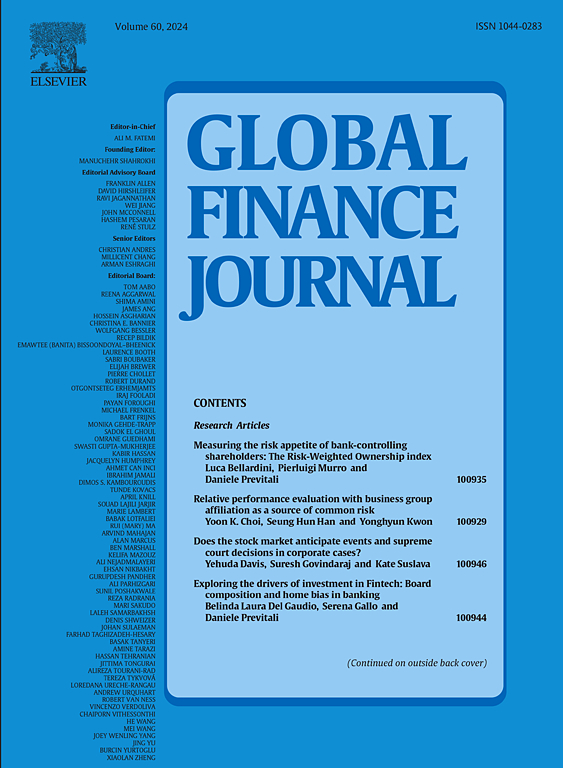The “night effect” of intraday trading: Evidence from Chinese gold and silver futures markets
IF 5.5
2区 经济学
Q1 BUSINESS, FINANCE
引用次数: 0
Abstract
This paper analyses the “night effect”, reflecting the introduction of night trading, on intraday trading patterns in the Chinese precious metals futures markets. The main results are summarized as follows: Firstly, both intraday momentum and reversal effect are significant. Secondly, before the launch of night trading, the first half-hour daytime returns have significant predictive power, whereas after the introduction of night trading, the first half-hour night returns become a significant predictor. This change can be attributed to the immediate reactions of domestic investors to international news released in the night session. Thirdly, the driving force of intraday predictability is demonstrated by evidence showing that intraday reversals are mainly driven by liquidity oversupply offered by irrational uninformed traders. Fourthly, the market timing strategy outperforms the always-long and buy-and-hold benchmark strategies. Overall, this study reveals that the introduction of night trading significantly alters intraday return predictability patterns of Chinese precious metals futures markets, benefiting regulators by highlighting the need for enhanced overnight market monitoring.
日内交易的“夜间效应”:来自中国黄金和白银期货市场的证据
本文分析了中国贵金属期货市场引入夜间交易对盘中交易模式的“夜间效应”。主要结果总结如下:第一,日内动量和反转效应均显著。其次,夜间交易前,前半小时的日间收益具有显著的预测能力,而引入夜间交易后,前半小时的夜间收益具有显著的预测能力。这种变化可以归因于国内投资者对晚间发布的国际新闻的即时反应。第三,有证据表明,日内反转主要是由非理性的不知情交易者提供的流动性供过于求驱动的,这证明了日内可预测性的驱动力。第四,市场择时策略优于长期做多和买入并持有基准策略。总体而言,本研究表明,引入夜间交易显著改变了中国贵金属期货市场的日内收益可预测性模式,通过强调加强隔夜市场监测的必要性,使监管机构受益。
本文章由计算机程序翻译,如有差异,请以英文原文为准。
求助全文
约1分钟内获得全文
求助全文
来源期刊

Global Finance Journal
BUSINESS, FINANCE-
CiteScore
7.30
自引率
13.50%
发文量
106
审稿时长
53 days
期刊介绍:
Global Finance Journal provides a forum for the exchange of ideas and techniques among academicians and practitioners and, thereby, advances applied research in global financial management. Global Finance Journal publishes original, creative, scholarly research that integrates theory and practice and addresses a readership in both business and academia. Articles reflecting pragmatic research are sought in areas such as financial management, investment, banking and financial services, accounting, and taxation. Global Finance Journal welcomes contributions from scholars in both the business and academic community and encourages collaborative research from this broad base worldwide.
 求助内容:
求助内容: 应助结果提醒方式:
应助结果提醒方式:


